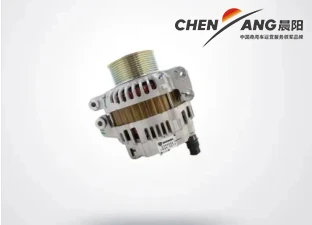types of heavy machinery
Types of Heavy Machinery
Heavy machinery plays a critical role in various industries, particularly in construction, mining, and agriculture. These powerful machines are designed to perform specialized tasks that require significant force, precision, and efficiency. In this article, we will discuss some common types of heavy machinery and their applications, highlighting their importance in modern operations.
1. Excavators
Excavators are among the most versatile heavy machines used in construction. They are equipped with a bucket, arm, rotating cab, and movable tracks or wheels. Excavators are primarily used for digging trenches, lifting heavy materials, demolishing structures, and grading. Modern excavators can be found in various sizes, from compact models suitable for limited spaces to large-scale machines capable of undertaking significant projects.
2. Bulldozers
Bulldozers are powerful machines equipped with a large blade at the front, which is used to push large quantities of soil, sand, or debris. They are essential in construction and mining operations for land clearing, grading, and moving material. The weight and robust construction of bulldozers make them ideal for tackling tough terrain and heavy workloads. Additionally, many bulldozers can be fitted with attachments like rippers for breaking up hard surfaces, further enhancing their versatility.
3. Loaders
Loaders are heavy machines designed to scoop, lift, and transport materials. They come in various types, including wheel loaders and track loaders. Wheel loaders are commonly used in construction sites to move dirt, gravel, and other materials. They have a front-mounted bucket and can swivel to dump loads in various locations. Track loaders, on the other hand, are better suited for rough or slippery terrains due to their tracked undercarriage, providing stability and traction.
4. Graders
types of heavy machinery

Graders, also known as motor graders, are essential for creating flat surfaces, particularly in road construction. Equipped with a long blade, graders are used to finely grade and level the terrain. Their design allows for precise adjustments, enabling operators to achieve the desired slope and finish. Graders are vital for preparing surfaces for paving, ensuring proper drainage and stability.
5. Cranes
Cranes are specialized heavy machinery used for lifting and moving heavy loads vertically and horizontally. They come in various types, including tower cranes, mobile cranes, and crawler cranes. Tower cranes are typically used in high-rise construction and can reach impressive heights. Mobile cranes, with their maneuverability, are often employed in situations where mobility is essential. Crawler cranes have tracks that allow them to travel over rough terrain, making them ideal for heavy lifting in remote locations.
6. Backhoe Loaders
Backhoe loaders combine the functionalities of a loader and an excavator. They feature a front bucket for lifting and transporting materials and a rear digging arm for excavating. This dual functionality makes them widely used in construction and landscaping projects. They are particularly valuable in tasks that require both digging and loading, streamlining operations and reducing the need for multiple machines.
7. Dump Trucks
Dump trucks are crucial for transporting loose materials such as sand, gravel, and dirt. They are designed with an open-box bed that can be tipped to unload its contents. Dump trucks come in various sizes and configurations, from standard models used on construction sites to larger models designed for mining operations. Their ability to quickly transport and unload large volumes of material makes them indispensable in many industries.
Conclusion
Heavy machinery significantly enhances efficiency in various industries by performing tasks that would be impractical or impossible by manual labor alone. From excavators to dump trucks, each type of heavy machinery serves a unique purpose and plays a vital role in the successful completion of construction, mining, and agricultural projects. As technology continues to advance, we can expect further innovations in the design and functionality of heavy machinery, leading to increased productivity and safety in the field. Understanding the different types of heavy machinery is essential for anyone involved in these industries, as it allows for more informed decisions in terms of equipment selection and project planning.
-
SINOTRUK HOWO 84 Electric Dump Truck for Eco-Friendly Heavy HaulingNewsJul.26,2025
-
The Fast 16-Gear Manual Transmission Assembly for Heavy TrucksNewsJul.25,2025
-
Mercedes Benz Actros 1848 42 Tractor Truck for Sale - Reliable PerformanceNewsJul.24,2025
-
High-Quality Water Pump Assembly for Sinotruk Trucks – Durable & ReliableNewsJul.23,2025
-
Premium Truck Engine Antifreeze Coolant Fluid for Heavy Duty VehiclesNewsJul.22,2025
-
FOTON View G7 Mini Bus: Affordable & Spacious TransportNewsJul.22,2025
Popular products

























